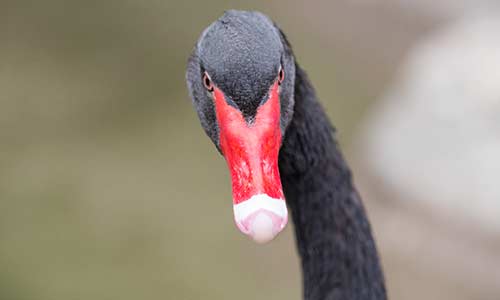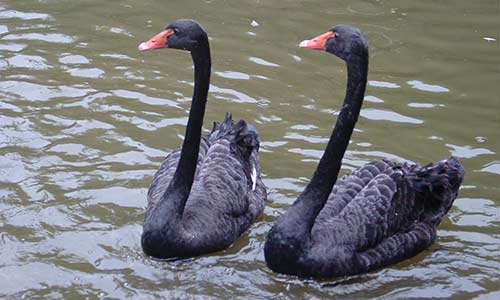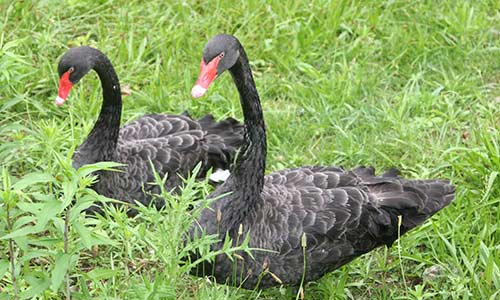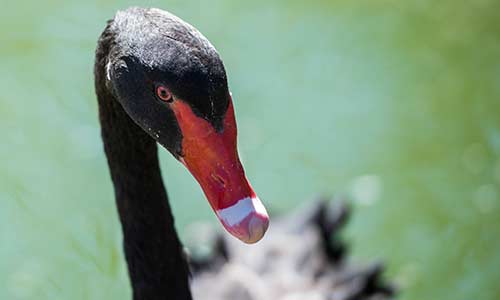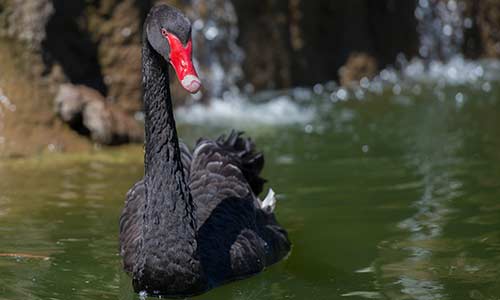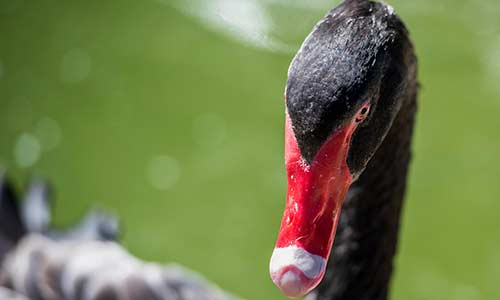Black Swan
Cygnus atratus
About the Black Swan

Geographic Range:
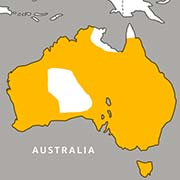
Class: Aves
Order: Anseriformes
Family: Anatidae
Genus: Cygnus
Species: atratus
The black swan is the least territorial of the swan species, who are known for fierce defense of their territories. Swans form mating pairs for life and define areas of Australian wetlands as their own, but they'll still flock together when food is scarce.
Black Swan Facts
Appearance:
The black swan has dark body plumage with white feather tips on its wings. The bill is a deep orange-red with a white band near the tip. This species has bright red eyes.
Size:
Length: 3.5-4.5 feet
Wingspan: 5-6.5 feet
Weight: 13-20 pounds
Behavior:
Black swans are the least territorial of the swan species. Though they usually have their own territory, they will flock when food becomes scarce. Black swans feed at dusk and fly at night, calling to each other to ensure they remain together. Their first line of defense against potential predators are their large wings, which they flap loudly to scare away other animals.
Reproduction:
Breeding season for black swans takes place from May to September annually. Individuals will find a mate and remain monogamous for life. The mated pair will build a nest in which five to six eggs are laid. The incubation period for these eggs is 35-48 days. After hatching, black swans reach sexual maturity between one to three years of age.
Habitat/Range:
Mated pairs establish territories of wetlands, ranging from fresh to salt water, throughout Australia. They prefer regions where aquatic plants are plentiful.
Diet:
Black swans primarily eat aquatic plants and algae. They sometimes come on land to forage for grasses.
You Can Find This Animal in the Aussie Aviary (Seasonal)
Swan Out of Water
Black swans are graceful in the air and on water, but they're quite clumsy on land.
You May Also Like
At Franklin Park Zoo:
At Stone Zoo:

